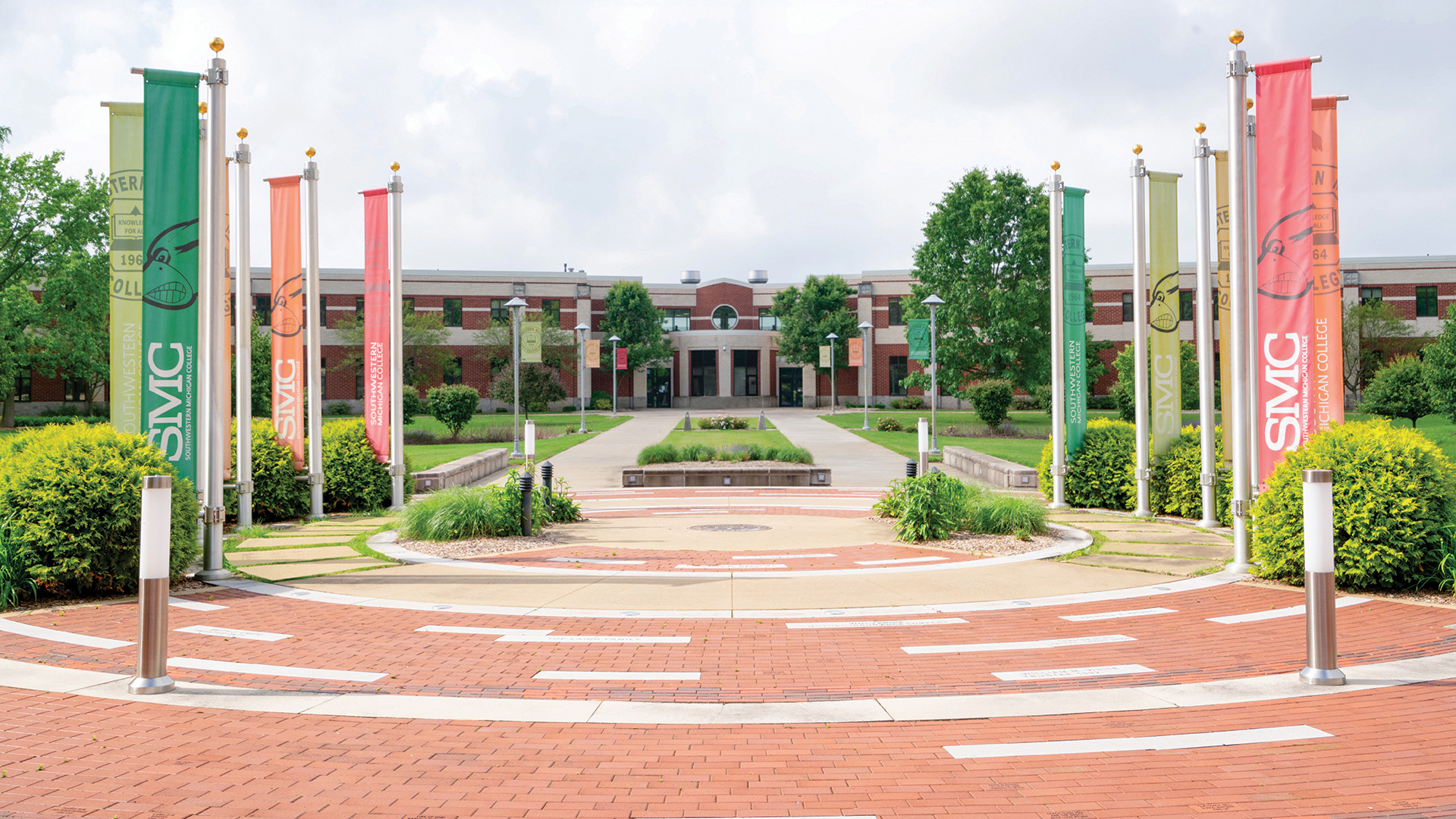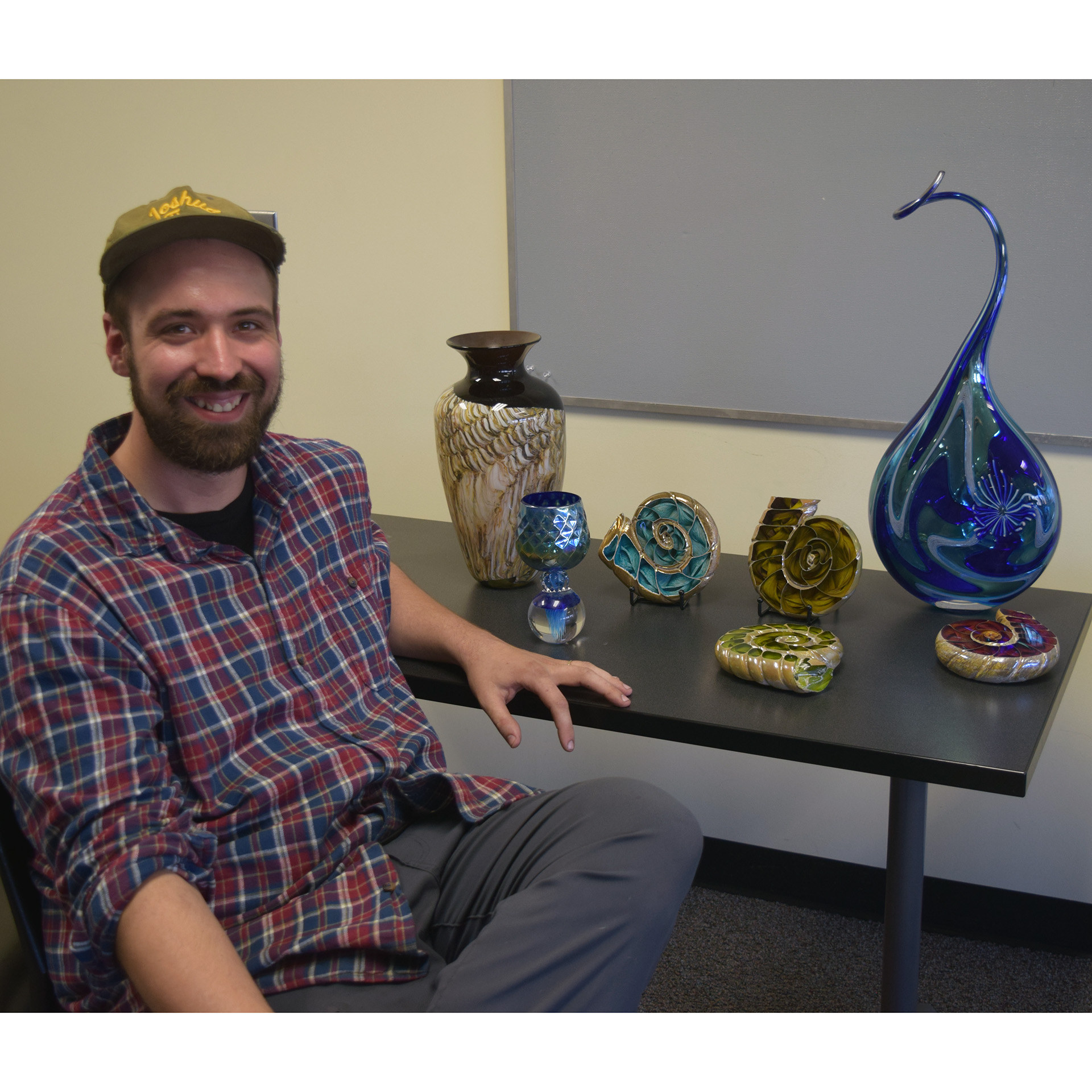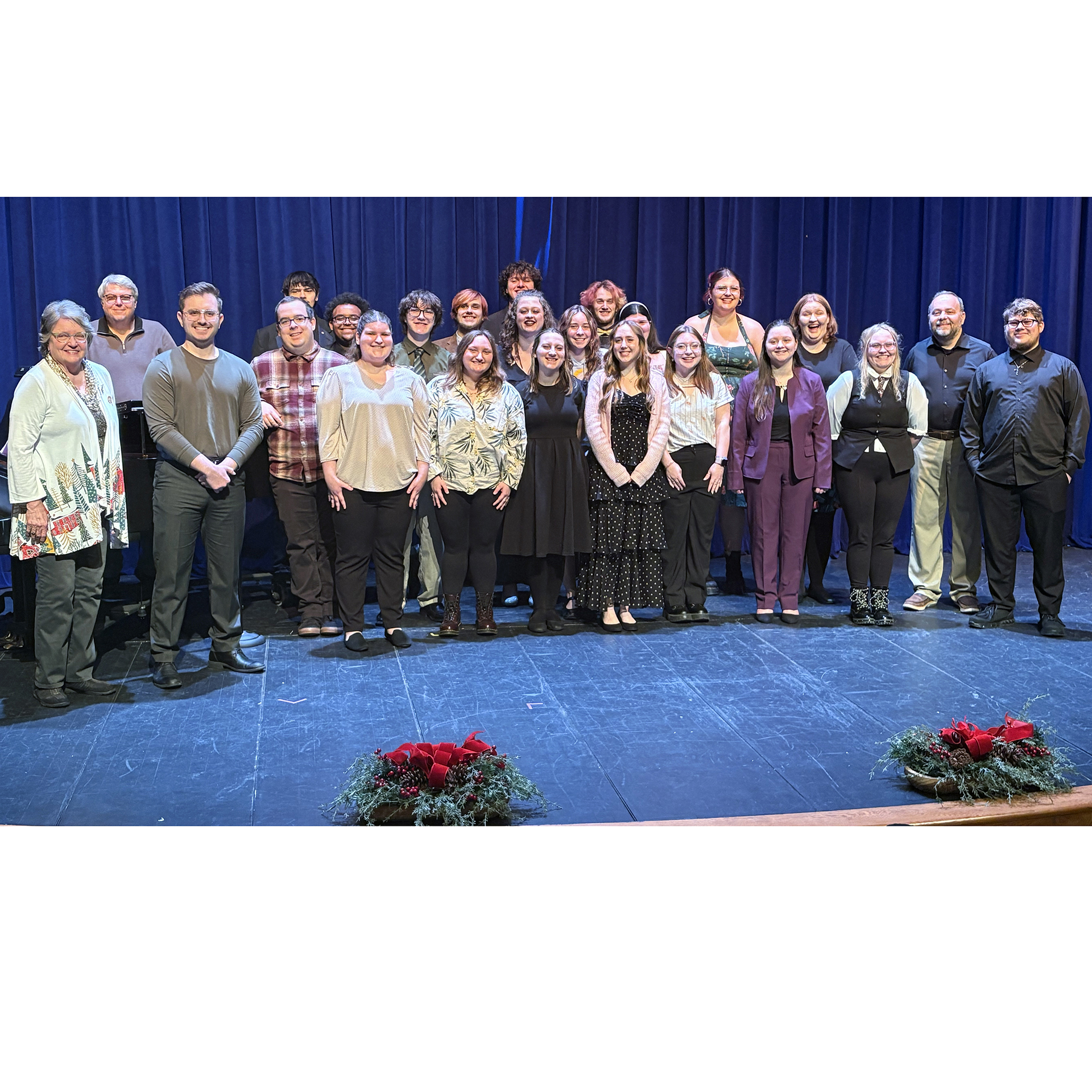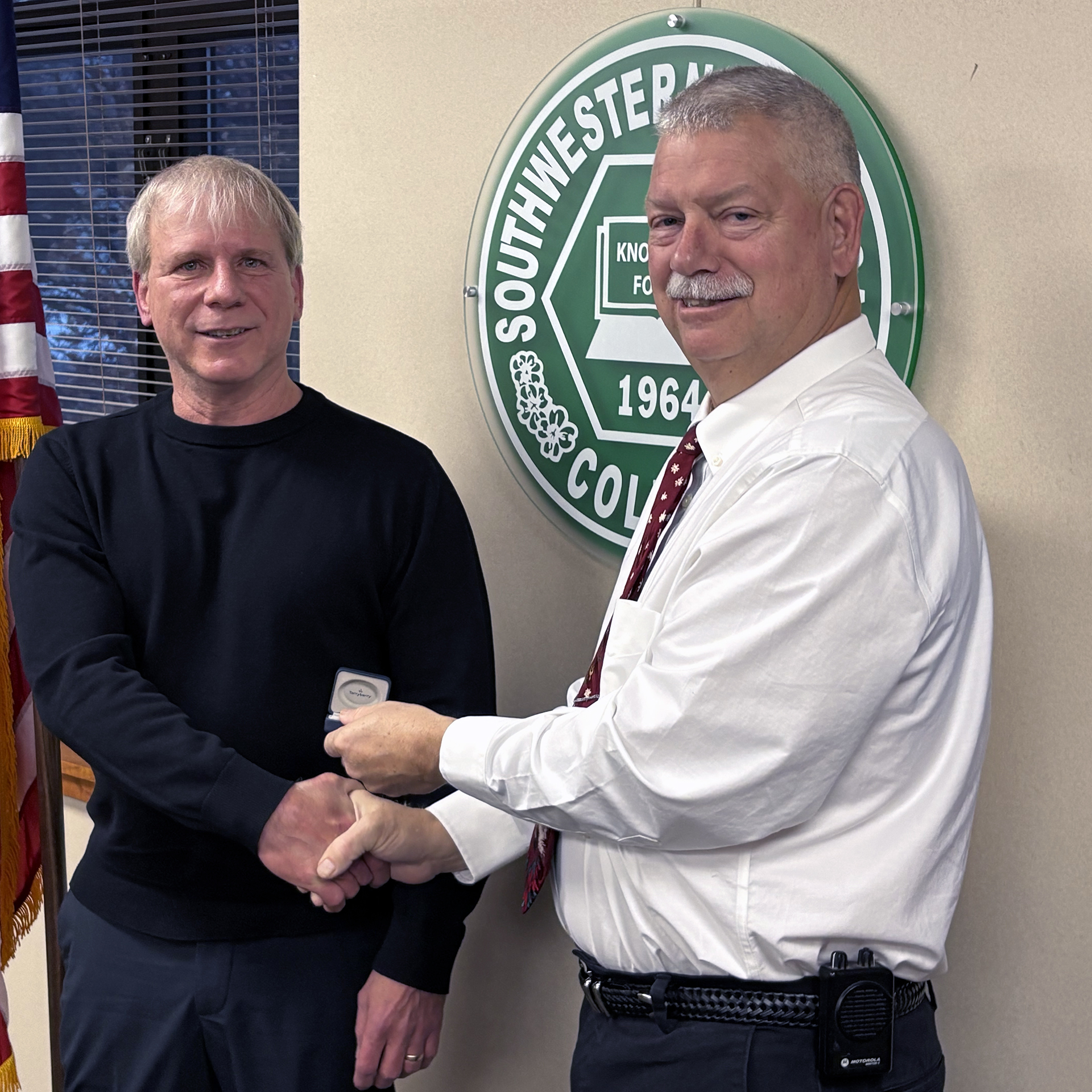
News
Glass Artist Returns to SMC as Guest Lecturer
Published on March 7, 2024 - 1 p.m.
Glass artist Eli Zilke credits fate for being in the right place at the right time.
Zilke grew up in Fairplain, graduated from Lakeshore High School in 2010 and attended Southwestern Michigan College in 2011 and 2012.
His ceramics instructor, Sherrie Styx, brought him back as guest presenter March 6 to address her Art History 2 class.
“I’ve been blowing glass for 20 years now,” Zilke said. “I started at 12 in a Benton Harbor after-school program. It’s an all-encompassing medium I fell in love with. Glass commands your entire attention.”
“I did it throughout high school and offered the studio owner to sweep floors, whatever I could to hang out and be present,” Zilke said. “He hired me as a studio technician. I learned how to build furnaces, repair equipment and from visiting artists from across the country. I had probably 30 different instructors over five years.”
Zilke knows some of the world’s foremost glass blowers and casters, including his personal mentor, influential art educator and 1964 Lakeshore graduate Jerry Catania, who died at 74 in May 2020 from leukemia.
Catania, founder of Water Street Glassworks in the Benton Harbor Arts District, at Michigan State University, was one of 30 students chosen to attend the first class at Pilchuck Glass School offered by Dale Chihuly in Washington state.
Catania was particularly proud of “Fired Up!”, a 2004 glass program for Benton Harbor area teens and the second-oldest youth glass program in the country after Chihuly’s Hilltop Project in Tacoma.
Zilke, “an outstanding student in the program, became his successor and made him so very proud,” according to Catania’s obituary.
Zilke’s next opportunity was starting a studio in Valparaiso, Ind. Hot Shot Valpo still operates, specializing in architectural installations, but Catania called him home to assume the Water Street educational component.
“I teach all of their adult classes and the after-school program I started in,” Zilke said. “It provides an opportunity to grow as people and artists and to grow friendships and partnerships and to be around people they’re not normally around, which changes the way you think about the world. I met my best friends through (Fired Up!).”
Glass originated in Egypt, Afghanistan and Mesopotamia (today’s Iraq and Iran), but was perfected by Romans with crucibles in wood-fired “beehive” furnaces.
Early glass was pressed, “like little tokens” for pharaohs and wealthy dignitaries. The Art Institute of Chicago “has a great collection of Egyptian glass,” he said. “Pieces were entombed, so didn’t see the light of day for thousands of years. The first hollow vessel was core-formed” by coating a rod with molten glass.
American glass production grew rapidly due to a plentiful timber supply to keep fires stoked.
Murano glass is produced on one of 118 small islands in northern Italy’s Venetian Lagoon, of which Venice itself is the largest. Canals are linked by 438 bridges. After one too many glass-factory fires, the local government prohibited use of ovens for industrial production and forced glass blowers to relocate to Murano in 1291.
“There was a hotel, restaurants, galleries and 140 glass factories at the peak,” Zilke said. “In Italy, they taxed on weight, so if they could halve the weight, they could ship for half the cost.”
Zilke works with “soft glass,” which melts at 2,000 degrees and is compatible with 300 colors. Another type, borosilicate glass, melts at a hotter 3,000 degrees. Lead crystal melts at 1,400 degrees.
Zilke narrated video clips of glass artists he admires — Italian-born Lino Tagliapietra, 89, a rock star comparable to Paul McCartney among peers; Nancy Callan, who grew up near Boston and relocated to Seattle in 1996 for a 19-year apprenticeship with Lino; Seattle’s Raven Skyriver, a Native American who works almost exclusively in the marine ecosystem, especially fish and sea turtles; Bertil Vallien, a Swedish glass caster known as the master of sand moulding; Amber Cowan, a Philadelphian who creates fused and flameworked glass sculptures from cullet (recycled broken or waste glass); Prague glass sculptor Martin Janecky; “my favorite artist of all-time,” Seattle’s Dante Marioni, known for tall, thin and colorful vessels and a mentee of Lino’s invited to the Clinton White House in 1995; and Josh Simpson, spouse of retired NASA astronaut Catherine Coleman, whose art is inspired by space.
Zilke passed around examples of cane glass made by heating and shaping chunks of clear, white or colored glass on the end of a punty (iron rod), then gathering molten clear glass over the color by dipping the punty in a furnace.
Murrine are colored patterns or images made in a glass cane revealed when cane rods are cut into coinlike cross-sections.
“Cane are the building blocks for glass blowers,” Zilke said. “You can get incredibly detailed or pull it thinner and thinner.”





